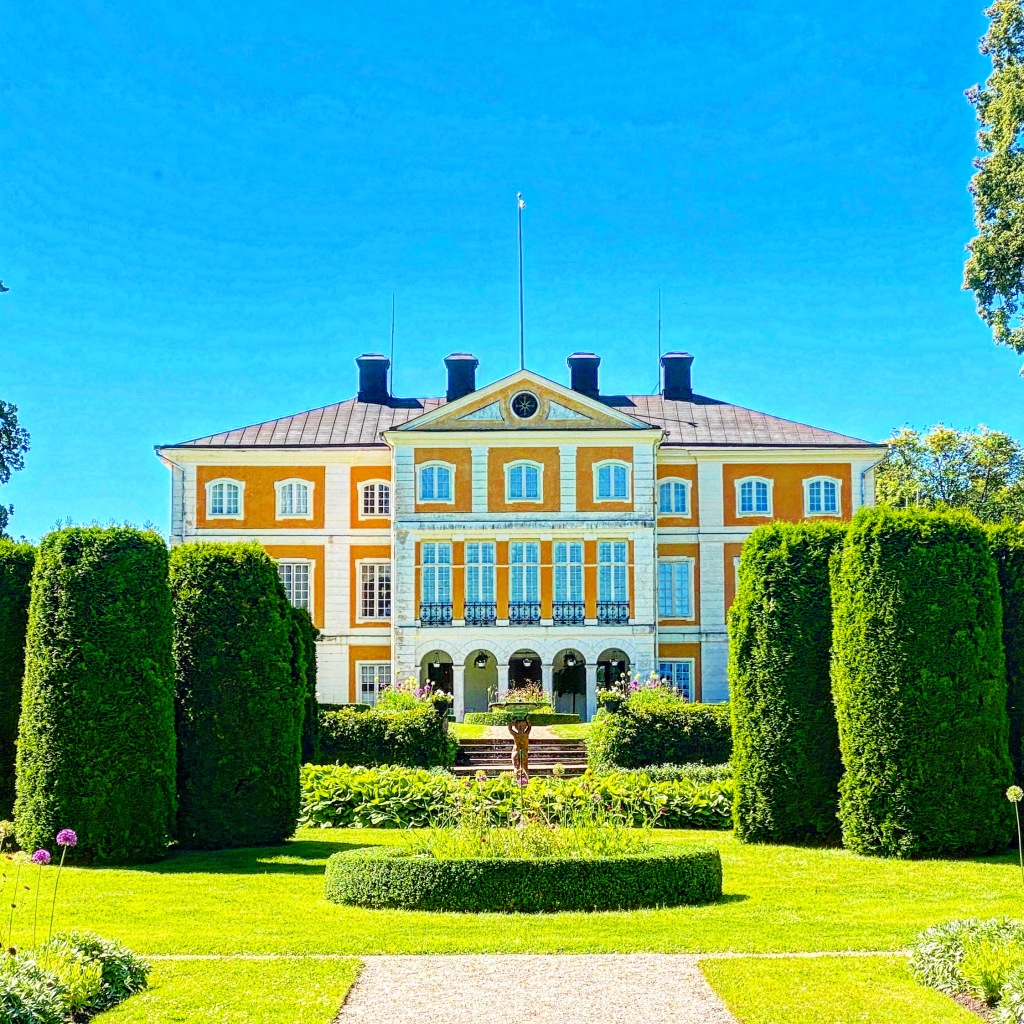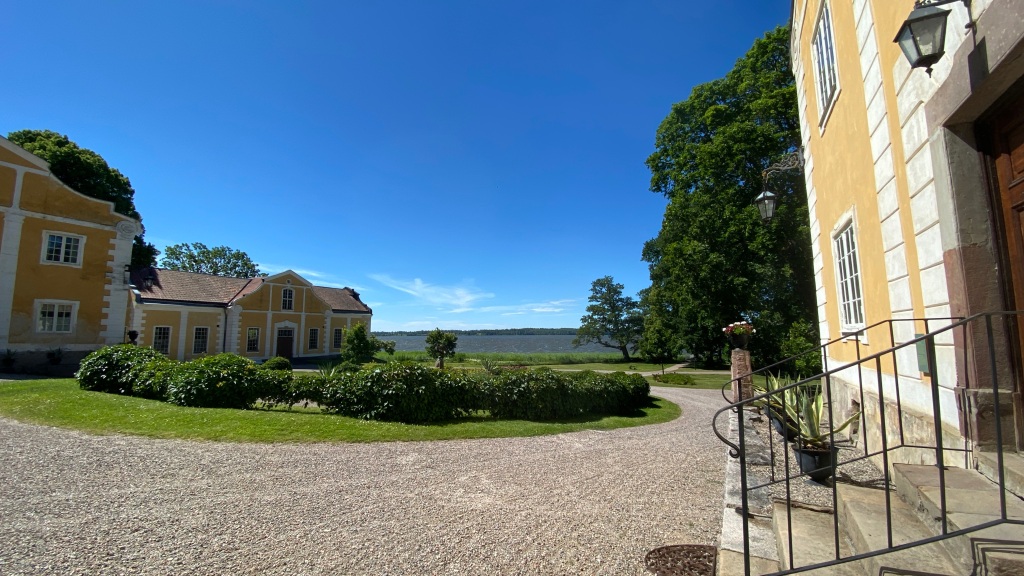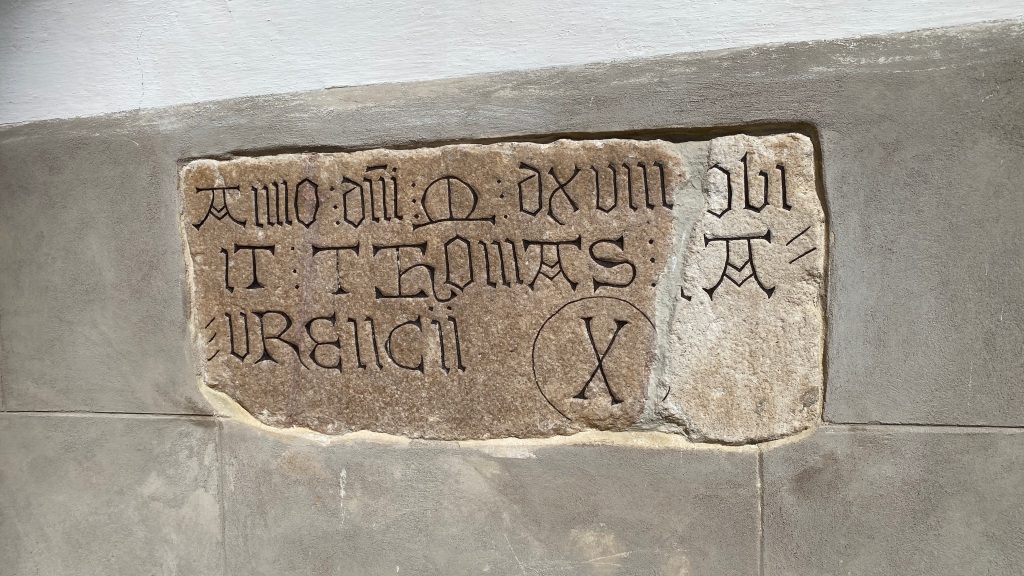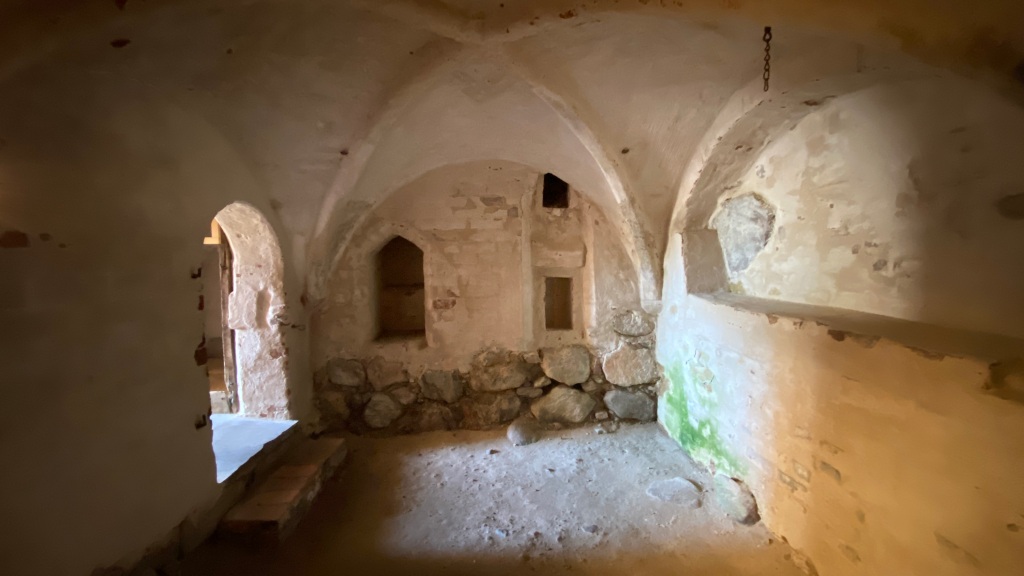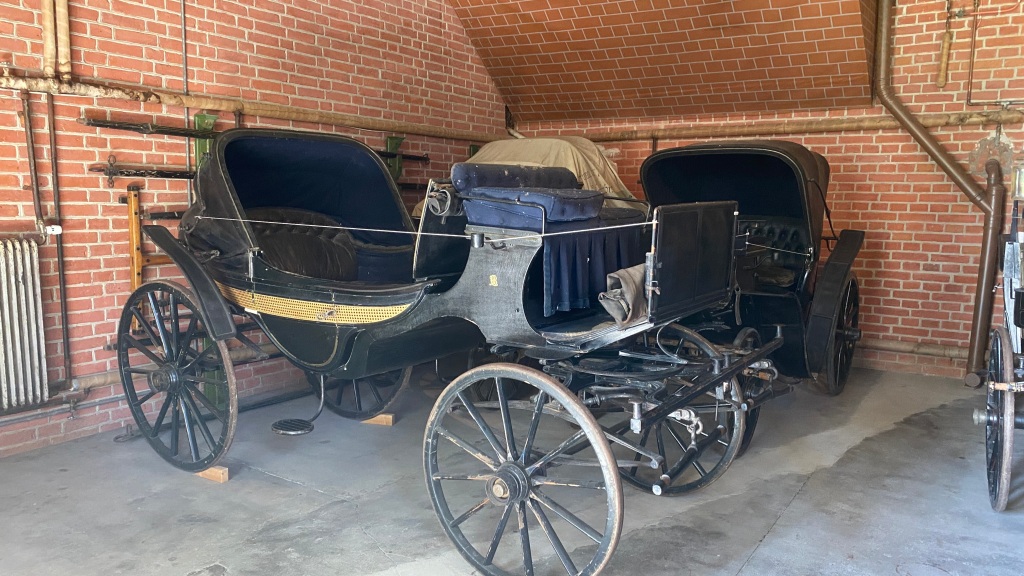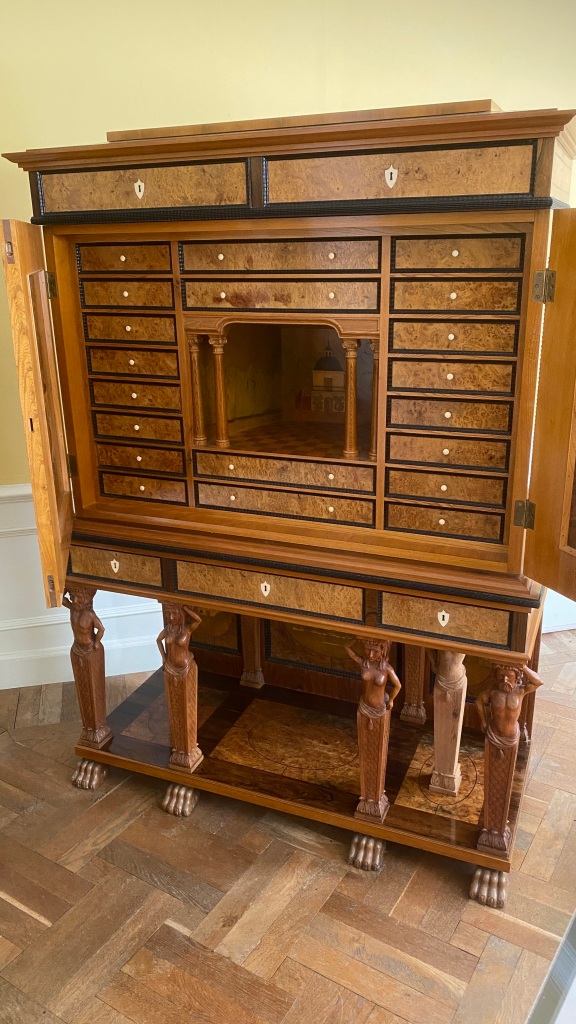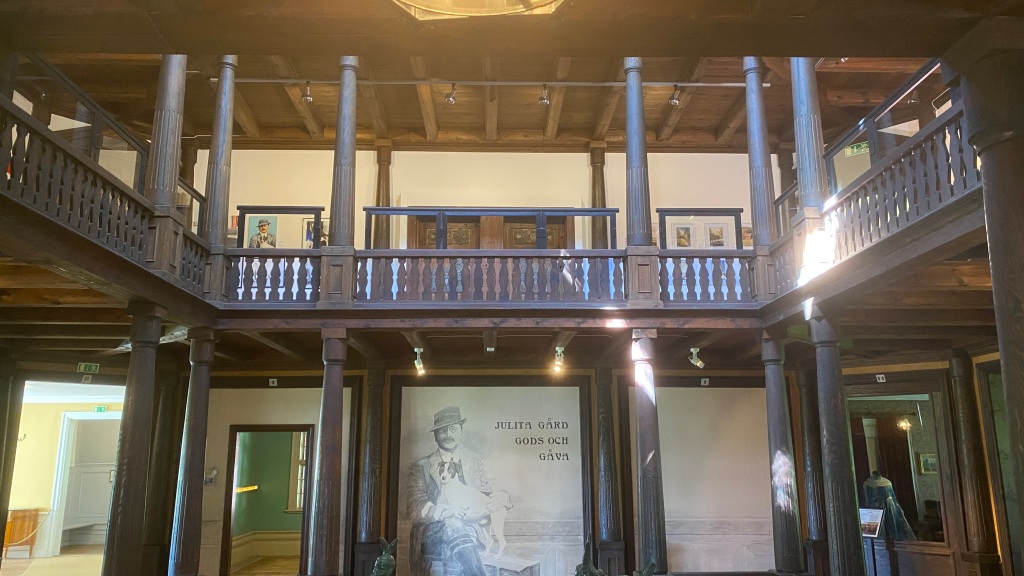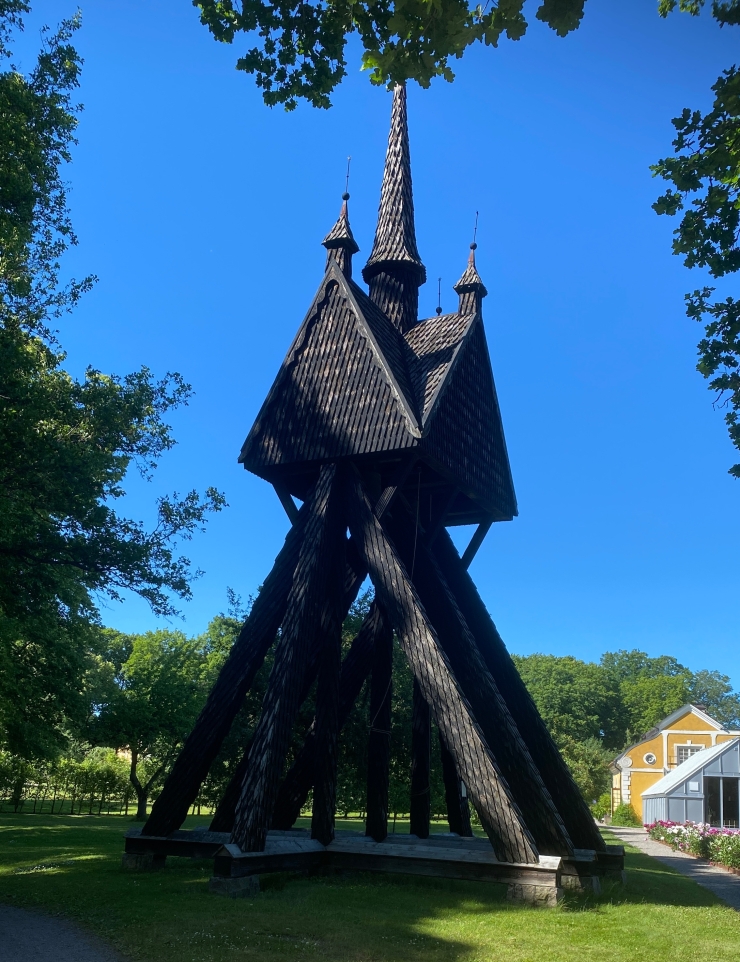The wind was blowing from the west, and the waves at Öljaren were as high as my expectations for a full day trip to Julita manor. The place where the manor is now located dates back to the end of the 12th century.
It is an important historical place in the county where we live. It is just a 1 hour and 20-minute drive away, too close to miss. Julita Manor is now part of the Nordiska Museet, where it was donated by its last owner, Lieutenant Arthur Bäckström.
Everything that my eyes and ears caught during and after the guided tour, and then stored in my memory, I will reproduce here as best I can.
The house, known as the big house, is significantly younger than the area. The main building was constructed in the 17th century but burnt down in the mid-18th century. A new house in the classicist style was built on the site sometime in the 18th century.
Arthur Bäckström’s parents bought the manor at auction in 1892 after the Palbitzki family. The house was completely empty at the time of purchase, so the Bäckström family put their own stamp on the house, its exterior, associated buildings, and everything I got to see inside the house.
The house has been owned by Arthur Bäckström since 1902, when he inherited it from his father, Johan Bäckström. He leased the farm until his death in 1941.
The tour guide was able to explain a lot to me, just to me, in an engaging way. Dressed in period clothing, the guide started the performance. A coachman’s residence, a stable, and carriage wing are some of the buildings that were added during Arthur’s time on the farm.
We did the guided tour in shifts because we had our dog with us, which is okay in the area as long as you keep the dog on a leash.
Speaking of dogs, it was dogs that were dear to Arthur Bäckström’s heart. They were his children. Since he didn’t have any kids of his own, the dogs were part of his family. It is also said that the dogs are buried where he himself is buried.
Back to the end of the 12th century, or rather 1180, I learned that King Knut Eriksson donated the farm Säby, corresponding to most of Julita parish, to the Cistercian order. A monastery was built where the manor stands today.
The monks built vaults where the south wing now stands. You can go down under it and look to see what the vault, which the monks built, looks like. Even the dog was welcome down. In the wing, there is a large kitchen for cooking for everyone in the mansion. There was another kitchen in the north wing, but that was where food was cooked for guests, passers-by, and a soup kitchen for vagrants who often came by.
During one and the same year in Arthur’s time. If I remember correctly, the guide said there were 1600 hobo visits in a year, which is documented. It makes me think that maybe Arthur cared about everyone and wanted to help the poor and hungry and make sure everyone who worked on the estate was fine.
With Lake Öljaren to the west and the manor house to the east, there is one thing to remember, but I’ll get to that a little later 🧭.
As we know from history, it was the Reformation in the 16th century under the rule of king Gustav Vasa. All the monasteries were looted and disappeared, and Sweden became Lutheran. Julita then became a royal farm.
I already knew that Gustav Vasa died in 1560 because I myself have worked at the county museum and lectured about him and his children – mainly his youngest son, Duke Karl (later King Karl IX). But I did not know that Gustav Vasa, just before his death, stayed at Julita for two weeks due to illness. The guide said that the king had a retinue with him and that included 200 horses. Horses that would last two weeks on the estate.
If the illness that the king contracted during his journey would cause his death, the guide could not answer. A detailed description of who owned the farm first and who took over later, the guide showed by pointing to the portrait paintings hanging on the hall wall of the house. I have now forgotten who they were.
The first floor of the house was Arthur’s private floor. The well-read and committed guide talked about how important his dogs were and that he loved to drink rhubarb juice in the morning when he woke up — and pointed to the pitcher on a small table next to Arthur’s bed. A bit of curiosity from the viewing, or it’s because I asked a lot and was as interested as the guide himself.
Arthur’s own breakfast room is at one end, and his private bedroom is at the other. Imagine if you had that for yourself. In between, a room where he and other higher dignitaries sat, smoking and playing cards, and, in all probability, discussing business and politics. Opposite is a room that serves as a study, with a desk and associated accessories.
It is the common area that meets us on the next floor: the lounge and dining room. A room with porcelain from Rörstrand and shelves filled with glass, glass with Arthur’s seal on it. My question was, of course, if the glasses come from Rejmyre glass factory, perhaps. The glass factory is not too far from here and was founded in 1810. The guide could not answer that question, so others will have to find out. On the website there may be answers or not?
In the room with all the crockery, there is a food elevator from where the food came from the warming room below, where the cooked food was transported from the kitchen in the south wing. In the so-called Julita room, there is a large painting of Julita piecework. The guide told us that leather cannons were made there. It was a way to make the cannons easier to move on the battlefield, but it turned out to be a fiasco. The gunpowder mixture was not always correct, and so the cannon blew up and fell apart.
The painting on the wall is a copy, the guide said. The original can be found at the National Museum in Amsterdam. I was there myself, in the spring of 2023, and certainly saw the original, but nothing I reflected on at the time.
On the top floor, there is a library, guest rooms, and a large drawing room. I learned that the professor and his wife were staying as guests in one of the guest rooms in the northern part of the salon. The large library of over 5000 volumes, I imagine, satisfied the professor on his visit.
Large trunks lined the entrance to the guest rooms as a sign that someone traveled far to stay there for a long time.
It wasn’t just visitors, tramps, and long-distance guests who enjoyed Artur’s company. Even the employees are said to enjoy it there. Most of the 150 employees lived in the area. A large part of them were crofters and lived in the 80 crofts on the manor.
One who was mentioned often and many times was the farm carpenter Forsman. Henning Forsman was his full name. I was told that the majority of the furniture in the mansion was made by him. In his carpentry workshop, which is located on the outskirts, there was no electricity. Everything was done by hand and with mechanical machines.
There was electricity in the manor house. In an enthusiastic way, the guide pointed out that the lamps in the ceiling did not have lampshades, which was to show that they did have electric light in the house.
Forsman’s mission was to manufacture furniture for the nobility in various historical styles. Most of the furniture in the house is made by him. The guide showed me chairs in the Empire style, and sure enough, I could see it. As an art historian, I immediately recognize the style: traditional lion’s paws and tassels as decoration, mainly on the chair legs.
I was able, after an hour of guiding, to leave the mansion at its back and the gigantic garden in front of me. At the end of it, a gazebo, which, according to the guide, is a replica. The original can be found at Skansen.
Many impressions and a lot in my historical backpack, we continued to explore the area. Orangery, museum, and a church are just a few buildings to visit. There is more, and a café of course. The coffee was almost more expensive than the entrance fee, but the nice café staff was a big plus. Water for the dog and coffee for us.
Adjacent to the church, there is a Julita Skans folk museum. There, Arthur Bäckström displayed items from his private collection. Today, when I came in, there was also a smaller art exhibition. “Finally,” I thought, “a bit of modern art when I got up to the exhibition, which is upstairs in the museum’s entrance.”
It is an ongoing exhibition of works from local artists. They operate in Katrineholm municipality – which includes Julita manor. The exhibition is organized by the non-profit association KIKK (Konstnärer i Katrineholms Kommun). There were some works I liked. Mainly the abstract works with strong colors.
The museum building is connected to the church on the farm. There is a small courtyard serving as a link between them. The church gate, as is the case in most instances, is in the west. That’s what I intended to convey, as I mentioned earlier, the matter concerning the weather lines.
The big house is to the east, as is the church’s altar. It is a walk from the gate in the west, from Öljaren’s location in relation to the farm. Traditionally, churches have always been built so that the altar is in the east and the entrance in the west. The congregation must therefore look towards the east, the direction which is the origin of light and where the sun rises.
The church then? Or rather a chapel. Built in wood according to Arthur’s own ideas. Wooden benches and an altar at the front in the east. A seemingly small religious building with a free-standing bell tower – a so-called campanile.
The day trip continued. We visited the orangery and the nearby brickworks. Some flowers were bought before there was a short visit inside the museum shop.
© Björn Blomqvist 2024-06-22
